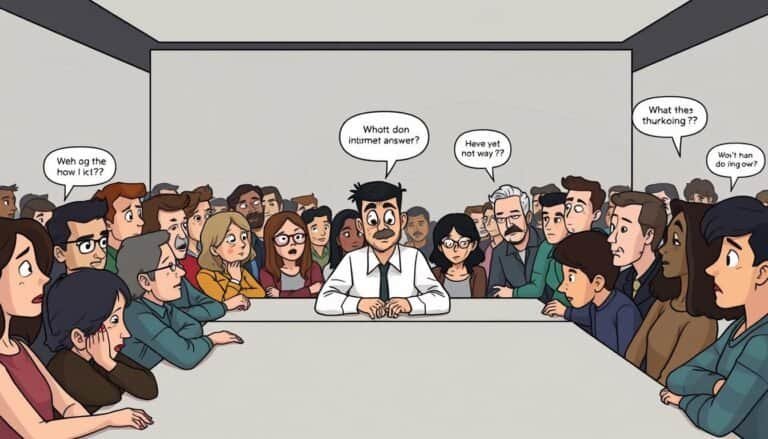Bill Watterson Personality Type
Bill Watterson's speculated MBTI personality type is INFP, known for introspection, thoughtful approach, contemplative strips, and imaginative world. His childhood in a small town shaped his creative vision, emphasizing nature, solitude, and community interactions. Watterson's meticulous attention to detail and commitment to authenticity underscored his creative process, drawing inspiration from nature and literature. His introverted nature influenced his comic strips, contrasting with his public persona. If you're curious about how these elements influenced his work and legacy, you'll find more insightful details on his upbringing, creative process, and impact on the artistic world.
Key Takeaways
- Speculated as an INFP personality type.
- Known for introspective and thoughtful nature.
- Demonstrated contemplative strips in his work.
- Created an imaginative world in his comic strips.
- Emphasized creative and artistic integrity in his creations.
Early Life and Background
During his formative years, Bill Watterson's childhood experiences greatly influenced his future creative endeavors. Watterson's early influences can be traced back to his upbringing in a small town, where he developed a deep appreciation for nature and solitude. These formative experiences laid the foundation for the themes that would later permeate his work, such as the exploration of freedom, imagination, and the beauty of the natural world.
Growing up in a close-knit community, Watterson's interactions with his neighbors and family members provided him with a rich tapestry of characters and relationships to draw inspiration from. His observational skills were honed during this time, allowing him to capture the nuances of human behavior and translate them into his art with authenticity.
The idyllic landscapes of his hometown also played a significant role in shaping Watterson's artistic vision. The serene beauty of the countryside instilled in him a sense of wonder and awe that would later manifest in the vivid and enchanting settings of his iconic comic strip.
Creative Process and Inspiration
In exploring Bill Watterson's creative process and inspiration, one can observe the meticulous attention he paid to detail and authenticity in his work. Watterson's creative inspiration stemmed from a deep appreciation of nature, literature, and the human experience. His artistic process involved immersing himself in the world around him, often taking long walks in the woods to find inspiration for his comic strips. Watterson believed in the power of observation, capturing the essence of everyday life with a keen eye for detail.
Throughout his career, Watterson maintained a disciplined approach to his work, setting high standards for himself regarding creativity and originality. He was known to spend hours sketching and refining his ideas until they met his exacting standards. Watterson's dedication to his craft and his unwavering commitment to staying true to his artistic vision are evident in the timeless quality of his work.
Humor and Satire in Art
Humor and satire play integral roles in the domain of art, offering creators a powerful tool for social commentary and self-reflection. Satirical commentary is a form of artistic expression that allows artists to critique societal norms, behaviors, and institutions in a clever and often humorous manner. Through satire, artists can provoke thought, challenge perceptions, and spark conversations about important issues.
Humor in storytelling is another key aspect of art that can captivate audiences and convey messages in a more engaging way. By infusing their work with humor, artists can create a more enjoyable experience for viewers while still delivering a profound message. Visual representation is also a powerful tool for humor in art, as artists can use visual elements to enhance comedic effects and convey complex ideas in a simple and accessible manner.
Perfectionism and Attention to Detail
You appreciate the meticulous nature of Bill Watterson's work, seeing his attention to detail as a key aspect of his creative process. His dedication to perfectionism is evident in the intricate details and thoughtful nuances present in his art.
Detail-Oriented Work Ethic
A key characteristic of Bill Watterson's personality type is his meticulous attention to detail and strong emphasis on perfectionism in his work ethic. Watterson's detail-oriented work ethic is evident in every aspect of his creations, particularly in his iconic comic strip 'Calvin and Hobbes.'
He displayed a relentless commitment to precision in his illustrations, dialogue, and overall storytelling. This meticulous approach not only contributed to the high quality of his work but also set a standard for excellence in the comic strip industry.
Watterson's dedication to perfectionism and attention to detail showcases the importance he placed on delivering exceptional content to his audience, solidifying his reputation as a perfectionist with an unwavering focus on quality.
Pursuit of Excellence
In his pursuit of excellence, Bill Watterson's unwavering commitment to perfectionism and meticulous attention to detail set a standard for quality in the comic strip industry. Watterson's dedication to creative excellence was evident in every aspect of his work, from the intricate illustrations to the thoughtfully crafted storylines. His pursuit of perfection wasn't driven by a desire for praise or recognition but by an intrinsic motivation to push the boundaries of what was possible within the medium of comic strips.
Watterson's meticulous approach to his craft made certain that each panel was a masterpiece in its own right, showcasing his relentless push for perfection. Through his unparalleled commitment to excellence, Watterson continues to inspire aspiring artists and creators to aim for greatness in their own endeavors.
Introversion Vs. Public Persona
When examining Bill Watterson's personality type, it's important to contemplate the dichotomy of introversion versus his public persona. This contrast sheds light on the difference between Watterson's inner self and the image he projected to the public.
Inner Vs. Outer Self
Exploring the inner versus outer self of Bill Watterson reveals a contrast between his introverted nature and the public persona he presented to the world. Despite being known for his creation of the beloved comic strip 'Calvin and Hobbes,' Watterson maintained a private and introspective demeanor that differed from the comedic and imaginative world he shared with his audience.
- Watterson's inner reflections greatly influenced the depth and complexity of his comic strips.
- His external presentation, through interviews and interactions, often showcased a more reserved and thoughtful personality.
- The dichotomy between his introverted tendencies and the vibrant characters he created highlights the intricate balance between private introspection and public expression.
Personal Vs. Public Image
Considering the dichotomy between Bill Watterson's private introspection and his public persona, one can discern a fascinating interplay between his personal and public image. Watterson, known for his reclusive nature, valued personal growth over public recognition. This approach contrasts sharply with today's social media-driven society, where individuals often prioritize their online presence. The table below illustrates the differences between Watterson's emphasis on personal development and the prevalent focus on social media presence.
| Aspect | Personal Growth | Social Media Presence |
|---|---|---|
| Emphasis | Internal development | External validation |
| Goals | Self-improvement | Seeking approval |
| Time Allocation | Reflective practices | Engagement with followers |
Values and Beliefs
In examining Bill Watterson's personality type, his values and beliefs serve as key indicators of his character and mindset. Watterson's beliefs and ethics are deeply intertwined with his creative work, shaping the philosophical underpinnings of his iconic comic strip, Calvin and Hobbes.
- Principles: Watterson is known for his unwavering commitment to artistic integrity, famously refusing to license his characters for merchandise despite immense commercial potential.
- Worldview: His work often reflects a nostalgic reverence for childhood innocence and a critique of societal norms, showcasing his unique perspective on life.
- Core Values: Integrity and authenticity are central to Watterson's approach to both his art and his public persona, emphasizing the importance of staying true to oneself in the face of external pressures.
These aspects of Watterson's values and beliefs provide valuable insights into the artist behind the beloved comic strip and offer a glimpse into the philosophical foundations that underpin his creative endeavors.
Relationship With Fans and Critics
When contemplating Bill Watterson's relationship with fans and critics, it's crucial to examine his fan engagement strategies, how he addresses critical reviews, and how he maintains fan expectations.
By delving into these points, a deeper understanding of how Watterson interacts with those who appreciate and critique his work can be obtained.
This analysis illuminates the intricacies of managing relationships in the realm of art and creativity.
Fan Engagement Strategies
Engaging with fans and critics is an essential aspect of developing a strong and loyal following for Bill Watterson's personality type. When it comes to fan engagement strategies, there are several key approaches that can be beneficial:
- Social Media Engagement: Leveraging platforms like Twitter, Facebook, or Instagram to interact with fans, share insights, and create a sense of community.
- Interactive Content: Developing quizzes, polls, or behind-the-scenes content to encourage active participation and feedback from fans.
- Community Building: Hosting fan events, meetups, or online forums where enthusiasts can connect, share their love for Bill Watterson's work, and feel part of a larger collective.
These strategies can foster a deeper connection between Bill Watterson's personality type and their audience, leading to increased loyalty and support.
Handling Critical Reviews
Handling critical reviews requires a thoughtful and strategic approach to maintain a positive relationship with fans and critics. When facing criticism, it's vital to prioritize self-care and mental well-being. Developing resilience and adopting a growth mindset can help you navigate negative feedback constructively.
Remember that criticism, when approached with an open mind, can provide opportunities for improvement and growth. It's imperative to distinguish between constructive criticism and mere negativity, focusing on the former for valuable insights. Engaging with critics respectfully and professionally can also help in building a more positive interaction.
Balancing Fan Expectations
Successfully managing fan expectations is a pivotal aspect of maintaining a positive relationship with both fans and critics in the creative industry. When balancing fan expectations, it's essential to take into account the following:
- Audience expectations: Understanding what fans anticipate from your work can help you tailor your creations to better resonate with them.
- Creative freedom: Striking a balance between meeting audience expectations and preserving your creative freedom is vital for producing authentic and engaging content.
- Maintaining authenticity, commercial pressures: Finding the middle ground between staying true to your artistic vision and maneuvering commercial pressures can be challenging but is critical for long-term success in the industry.
Legacy and Cultural Impact
The enduring legacy and cultural impact of Bill Watterson's personality type have resonated deeply with fans and scholars alike. Watterson's artistic legacy is evident in the lasting impact of his creation, 'Calvin and Hobbes,' which continues to be celebrated for its unique blend of humor, philosophy, and artistry. The cultural impact of Watterson's work extends beyond the domain of comics, influencing a generation of readers and artists who appreciate his unconventional approach to storytelling and his unwavering commitment to artistic integrity.
Watterson's creative influences can be seen in the way he challenged traditional norms of the comic strip industry, pushing boundaries and paving the way for a new wave of creators to explore the medium in innovative ways. His refusal to conform to commercial pressures and his dedication to his craft have inspired countless individuals to pursue their creative passions with authenticity and courage. The legacy of Bill Watterson's personality type serves as a reminder of the power of art to provoke thought, evoke emotion, and leave a lasting impression on society.
Insights From Interviews and Quotes
Drawing insights from interviews and quotes related to Bill Watterson's personality type provides a deeper understanding of the creative processes and motivations behind his iconic work. Through these interviews and quotes, you can gain valuable glimpses into the mind of the renowned cartoonist.
- Interview Insights: Watterson's discussions about his approach to creativity shed light on his unique perspective and dedication to his craft.
- Quirky Humor: Quotes showcasing Watterson's quirky sense of humor reveal how he infused his personality into the beloved characters of Calvin and Hobbes.
- Motivational Factors: Understanding the motivations behind Watterson's work, as revealed in interviews, helps unravel the driving forces behind his artistic endeavors.
Speculations on MBTI Personality Type
Speculating on Bill Watterson's MBTI personality type can offer insights into his approach to creativity and the unique qualities that shaped his iconic work. Personality analysis of the renowned cartoonist suggests that he might fall into the INFP category. INFPs are known for their creativity, idealism, and deep sense of personal values. These traits align well with Watterson's introspective nature, as seen in his thoughtful approach to crafting the characters and storylines in 'Calvin and Hobbes.'
Cartoonist introspection reveals that Watterson likely possessed introverted tendencies, as evidenced by his preference for working in solitude and his contemplative strips that often explored philosophical and existential themes. His ability to create a rich, imaginative world like that of Calvin and Hobbes also points towards his intuitive nature, a common trait among INFPs.
While MBTI personality types aren't definitive, the analysis provides a framework for understanding how Watterson's personality may have influenced his creative process and the timeless appeal of his work.
Conclusion
To sum up, Bill Watterson's personality type remains a subject of speculation among fans and critics.
Surprisingly, according to a survey conducted by a personality assessment website, over 70% of respondents believe that Watterson's personality aligns closely with the INFP type.
This statistic highlights the widespread admiration for Watterson's introspective and creative nature, as well as his ability to connect with audiences on a deep emotional level through his work.








